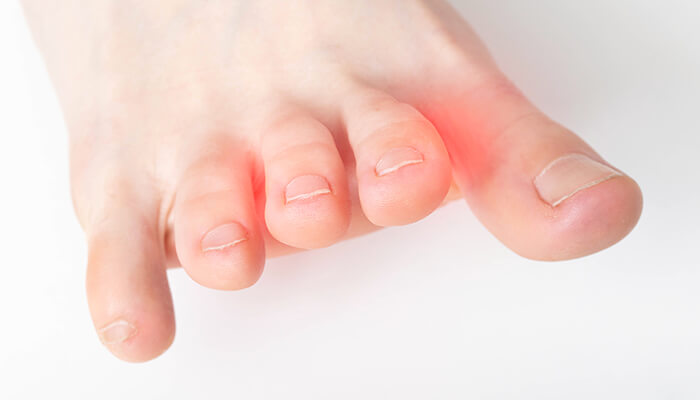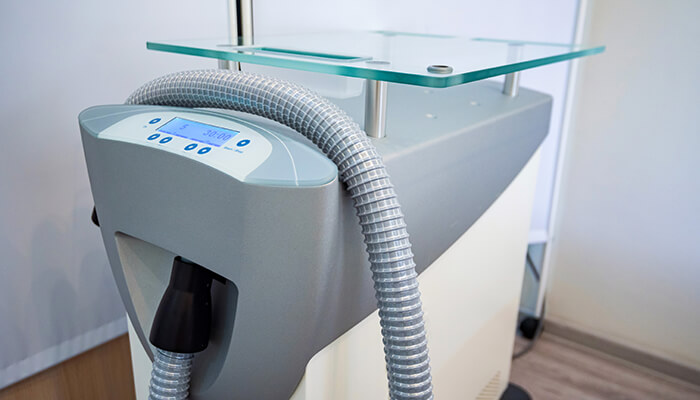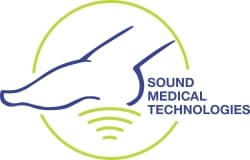What is cryotherapy?
Cryosurgery
CRYOTHERAPY neuroma treatment
Cryotherapy (“cryo” meaning cold and “therapy” meaning cure) is a minimally-invasive alternative to invasive surgery. Cryotherapy involves using extremely cold temperatures to treat localized areas of pain.


What Does Cryotherapy Treat?
Cryotherapy Treats:
- Fibromas
- Morton’s Neuroma
- Plantar Fasciitis
- Diabetic Neuropathy
- Heel pain
- Rebuilds muscle mass and strength in legs.
- Causes the brain to release endorphins which reduce pain in other parts of the body.
- Regrowth of the nerve paths to stop shooting pain and burning.
- Repolarizes nerve membranes that may have been disrupted by neurotoxins.
- Delivers pain relief during treatments.
- Supports a full restful night’s sleep.
- Eliminates burning, tingling, and numbness.
- Feeling returns to feet promoting better balance.
Benefits Of Cryotherapy
Six minute office procedure with a high success rate allowing you to walk out of the office, shower the next day and not miss any work!
How Does Cryotherapy Work?
By having the ice form around the actual nerve itself, the outer layers of the nerve sheath degenerates and, in doing so, decreases the nerve’s abilities to transmit the signal of pain. Over the course of the next couple of months, the nerve sheath regenerates again and in most cases regenerates without the inflammation and you are pain free.
Does Cryotherapy Work?
You bet it does! Just like applying an ice pack on the skin relieves minor aches and pains, cryotherapy has been shown to be very effective in relieving very painful foot conditions such as heel pain (plantar fasciitis), neuromas, and has been showing promising results in treating other conditions such as tarsal tunnel pain, tendonitis and may even be helpful in cases of arthritis and diabetic neuropathy.
Frequently Asked Questions
How painful is cryosurgery?
It isn’t painful at all. Plenty of local numbing medication much like novocaine is used, and patients generally don’t feel anything. This local anesthetic is usually isn’t injected into the actual site of your neuroma. Instead, anesthetic is injected into the top of the foot and the ankle, which soon makes the entire foot numb. Also note that the skin here isn’t very sensitive, so the injections are tolerated extremely well. Generally patients feel less discomfort than with dental injections. A podiatrist in Pittsburgh has performed cryosurgery hundreds of times and most patients complain of almost no pain.
How long do cryosurgery procedures take?
Cryosurgery takes under an ½ hour in most cases. A large portion of this time is the time it takes for the toes to go completely numb, and the actual procedure takes only minutes.
What do I do immediately after the procedure?
It’s a good idea to bring a driver with you, so you can sit in the back-seat and elevate your foot. For the next 24 hours, limit walking (short periods of about 10 minutes are OK). A Wexford podiatrist recommends that patients only walk for periods of less than 10 minutes immediately after the procedure.
When is it OK to return to more vigorous activities like running and sports?
In general we recommend that patients wait for as long as 2 weeks for a complete healing time from cryosurgery. Often less time is required (3 days). Ultimately, this depends on each individual patient and how they heal. Ask our podiatrist in Cranberry, Mars, and Seven-Fields.
How long does the average patient take to feel the maximum benefits?
Our patients know their body best, and we advise patients to “listen to their body.” Our clinical experience has shown that most patients feel the most benefits at about 3 months. Again, much of this is up to the individual patient and the level of discomfort (tenderness) they experience after the procedure.
Are there many cryosurgery complications? Risks of cryosurgery?
Cryosurgery is extremely safe and effective. In the vast majority of cryosurgery cases there are no complications whatsoever.
Is cryosurgery an experimental procedure?
No. For more than a quarter century cryotherapy has been used to treat many conditions. Practitioners using cryo to treat Morton’s neuroma typically see a greater than 80% success rate—even in patients who have had unsuccessful open surgery. Our podiatrist in Sewickley reports very high success rates and patient satisfaction.
How To Prepare For Cryosurgery?
In most cases there is no preparation is needed at all, but if there is something important then your doctor will surely tell you about it.
However, you should try to quit your daily medications before the treatment and quit smoking too as it can interfere with your recovery.
You should plan someone to drive you home since it’s not safe to drive after the treatment.
What Are Risks Of Cryosurgery?
Just like every surgery there are some risks of cryosurgery, so it’s better to know about them before you experience them.
Here are some common side effects of cryosurgery:
- Pain in the treated area which should subside after few weeks
- Scarring
- Ulcers
- Discoloration of the skin
- Blisters
- Risk of infection
What Happens After Cryosurgery?
After the surgery is finished you can go home but make sure you bring someone to drive you home.
However, if you had an internal organ cryosurgery then then your doctor may recommend you to stay in the hospital For one or two days.
After that you can go home, but once you go you need to protect your treated area and keep it clean especially the incisions.
Changing bandages can also be s good option to prevent infection, so you should visit your doctor to change bandages once they worn out.
You may feel some amount of pain but it can be relieved with OTC pain relievers.
This pain should go away After three days, the same goes and you will fully recovery in two to three weeks but it varies from patient to patient so even if your recovery takes time do not feel down.
Sometimes you may need more than one sessions since one session isn’t enough.
Lastly, if you have some more health concerns related to cryosurgery then you should ask your surgeon about it.
Can cryosurgery help after traditional open surgery has failed?
Yes. Cryosurgery is an excellent option if previous surgery has failed. After a failed surgery, the remaining nerve stump may be encased in scar tissue, and freezing it is an excellent option. Cryosurgery can even work if a “stump neuroma” is present.
How Different Cryosurgery Will Be From Laser Surgery?
Both Cryosurgery and Laser surgery are medical treatment, used to treat various medical conditions, but they work much differently:
- Method:
Cryosurgery: It’s a procedure that uses extreme cold, usually liquid nitrogen Or argon gas to freeze and destroy abnormal tissues, it’s usually used for tumors and skin lesions.
Laser Surgery: It’s a focused light energy that cuts, burns or vaporizes the tissues.
- Impact On Tissues:
Cryosurgery: Cells are frozen and killed by ice crystals that form inside cells, which leads to cell death.
Laser Surgery: Laser heat will cut or destroy the cells precisely, fortunately this doesn’t have a lot of impact on the surrounding skin.
- Applications:
Cryosurgery: Cryosurgery is usually used for warts, skin lesions, cervical dysplasia, internal tumors or even prostate cancer.
Laser Surgery: Usually used for tumors, skin conditions such as birthmarks, scars, cosmetic treatments and eye surgeries.
- Precision
Cryosurgery: Less precise compared to Laser treatment, it’s much more effective in treatments where precision isn’t needed.
Laser Treatment: Focused laser beam is highly precise, this can be used even for treating areas like eyes, and vocal cords.
- Scarring:
Cryosurgery: Treatment can leave scars or skin discoloration once healed.
Laser Surgery: There’s a risk of minimal scarring, especially in case of cosmetic surgery.
Can Cryosurgery Be Used On Internal Organs?
Yes, Cryosurgery surgery can be used on certain internal organs, and most of the time it happens when abnormal or cancerous tissues need to be destroyed. Particularly, this is much more effective when traditional treatments may not work, here are some inter alia organs on which Cryosurgery can be performed:
- Liver: Liver tumors can be effectively treated with Cryosurgery, especially for patients who aren’t good candidates for traditional surgeries or have multiple small tumors.
- Lungs: Great for Lungi tumors, especially in cases where surgery might be a scary option.
Is cryosurgery covered by insurance?
This depends entirely on what type of insurance plan you have. Some cover cryotherapy for Morton’s neuroma, but some don’t. It’s best to call our offices and we’ll check with your insurance company.
Can both feet be treated in the same visit?
Circumstances are different for each patient, but podiatrists almost always chooses to treat one neuroma at a time. Treating both feet during the same visit often causes an unnecessarily long recovery time.
I have both a Morton’s neuroma and a bursa problem. Can cryosurgery treat both?
These two conditions commonly occur together. Cryosurgery is an excellent treatment for both. Note that if the bursa is large and extremely inflamed, then a cortisone injection may also be necessary.
Does cryosurgery provide permanent relief?
The vast majority of patients have no recurrence of Morton’s neuroma, but recurrence is possible. A review of our case records shows that very few patients need a second treatment to resolve their symptoms.
Is there scientific evidence that cryosurgery is effective?
While not many large studies have been conducted, physicians who use cryotherapy generally get very good results. In our office in Robinson cryosurgery for Morton’s neuromas achieves an 70-80% success rate, and this is a conservative estimate. To put this question in perspective, there’s very little evidence that cortisone injections are effective for the long-term treatment of this condition.
Is cryosurgery safe?
Yes. It’s actually much safer than older, more invasive procedures.
What are some potential side-effects or complications of cryosurgery?
While cryosurgery is extremely safe, any procedure carries a risk. This risk is small, and from a safety and effectiveness standpoint, cryosurgery makes sense. It’s also important to note that choosing to do nothing carries risks: over time, the condition may worsen or develop complications on its own.
- Mild infection that usually goes away without treatment.
- Mild sensory damage to the foot, usually at the location of the neuroma. This is very, very rare.
- Scarring, mainly in patients with a genetic predisposition to scar formation.
I’ve heard cryosurgery can cause permanent numbness. Is this true?
It’s so rare it almost never happens. Occasionally patients experience a slight decrease in sensation, but this almost always goes away in a matter of weeks.
Sound Medical Technologies, Inc. offers several ESWT– related services. We provide trained staff and certified technicians to operate the equipment during ESWT procedures. Physician certifications, recommendations and our clinical applications specialist can answer all your questions.
Call Sound Medical Technologies to learn how you can have this technology available on a case-by-case basis, without purchase or lease. We deliver and set up the machine and provide you with educational materials for patients. Assist you in providing the procedure. You maintain control of the patient relationship. You receive the reimbursement into your practice.
How long is the recovery period after cryosurgery, and what is the typical post-operative care?
The recovery period after cryosurgery can vary depending on the specific procedure and the area of the body treated. Generally, the recovery is relatively shorter compared to traditional surgical methods. However, the following are some common aspects of the recovery period and post-operative care after cryosurgery.
- Immediate Recovery: Patients can often resume normal activities shortly after cryosurgery, typically within a day or two. The treated area may be sore, swollen, and red immediately after the procedure.
- Pain Management: Over-the-counter pain relievers or prescribed medications can help manage any discomfort. The healthcare provider will provide specific guidelines on pain management.
- Swelling and Bruising: Swelling and bruising in the treated area are common and usually subside within a few days to a week. Applying ice packs can help reduce swelling.
- Dressing Changes: If dressings are applied to the treated area, healthcare providers will provide instructions on how often to change them and how to keep the area clean.
How does cryosurgery contribute to wound healing and tissue regeneration?
Cryosurgery, which involves the use of extreme cold to treat tissues, can impact wound healing and tissue regeneration through several mechanisms:
- Cellular Destruction: Cryosurgery selectively damages or destroys targeted cells by inducing ice crystal formation within them. This controlled destruction removes abnormal or unwanted tissue, creating a “wound” that initiates the healing process.
- Inflammatory Response: Cryosurgery triggers an inflammatory response, characterized by the release of inflammatory mediators and recruitment of immune cells to the treated area. Inflammation is a natural part of the healing process and helps clear damaged tissue.
- Angiogenesis: The freezing and subsequent thawing process can promote the formation of new blood vessels (angiogenesis). Increased blood flow enhances nutrient and oxygen delivery to the treated area, supporting tissue repair.
What medical conditions might contraindicate the use of cryosurgery?
While cryosurgery is generally considered safe and effective for various medical conditions, there are certain situations where it might be contraindicated or require careful consideration. Contraindications for cryosurgery may include:
- Poor General Health: Individuals in poor overall health may not be suitable candidates for cryosurgery. Conditions such as severe cardiovascular disease, uncontrolled diabetes, or compromised immune function may pose risks during the procedure.
- Circulatory Disorders: Cryosurgery relies on the body’s ability to heal and regenerate tissues, which can be compromised in individuals with circulatory disorders. Poor blood circulation may impede the healing process and increase the risk of complications.
- Peripheral Neuropathy: Conditions that affect peripheral nerves, leading to impaired sensation or nerve function, may increase the risk of injury during cryosurgery. Individuals with peripheral neuropathy may have reduced awareness of cold-induced damage.
Pregnancy: The safety of cryosurgery during pregnancy is not well-established, and caution is generally advised. The potential effects of extreme cold on fetal development may pose a
Can cryosurgery be performed on an outpatient basis, or is hospitalization required?
Yes, cryosurgery is typically performed on an outpatient basis, meaning patients do not need to stay overnight in a hospital. It is considered a minimally invasive procedure, and patients can usually go home on the same day after the surgery.
The outpatient nature of cryosurgery offers several advantages, including reduced healthcare costs, decreased risk of hospital-acquired infections, and the convenience of recovering in the comfort of one’s home. However, the specific setting (hospital, clinic, or specialized facility) where cryosurgery is performed can vary based on the complexity of the procedure and the resources available at the healthcare provider’s facility.
Patients undergoing cryosurgery will receive pre-operative instructions, and after the procedure, they will be monitored for a brief period in the recovery area before being discharged.
How should one dress or prepare for a whole-body cryotherapy session?
Preparing for a whole-body cryotherapy session involves a few specific steps to ensure safety and effectiveness:
1. Clothing:
– Minimal Clothing: Typically, you’ll wear minimal clothing to expose as much skin as possible to the cold. This usually means wearing a swimsuit, sports bra, or shorts.
– Protective Gear: You will be provided with protective gear for sensitive areas. This usually includes socks, gloves, and sometimes earmuffs or a headband to protect your ears.
– Footwear: Wear dry, clean socks and slippers or special cryotherapy boots to protect your feet.
2. Jewelry and Accessories:
– Remove Metal Items: Remove all metal jewelry and accessories, including watches, rings, necklaces, and piercings, as these can become extremely cold and cause burns or frostbite.
3. Skin and Body Preparation:
– Dry Skin: Ensure your skin is completely dry. Avoid applying lotions, oils, or any moisture before the session as it can increase the risk of frostbite.
– Wound Protection: Cover any open wounds or sores with a bandage to protect them from the extreme cold.
4. Hydration and Nutrition:
– Hydrate: Drink plenty of water before your session to stay hydrated, but avoid eating a large meal right before the session.
How should one care for their skin after a cryotherapy session?
After a cryotherapy session, caring for your skin is essential to ensure its health and maximize the benefits of the treatment:
- Warm Up Gradually: Allow your body to warm up naturally. Avoid hot showers or baths immediately after the session to prevent shocking your system.
- Moisturize: Apply a gentle, hydrating moisturizer to your skin to combat dryness caused by the extreme cold.
- Hydrate: Drink plenty of water to stay hydrated, which helps maintain skin elasticity and health.
- Protect: If you experience any redness or irritation, use a soothing aloe vera gel or a calming lotion to reduce discomfort.
